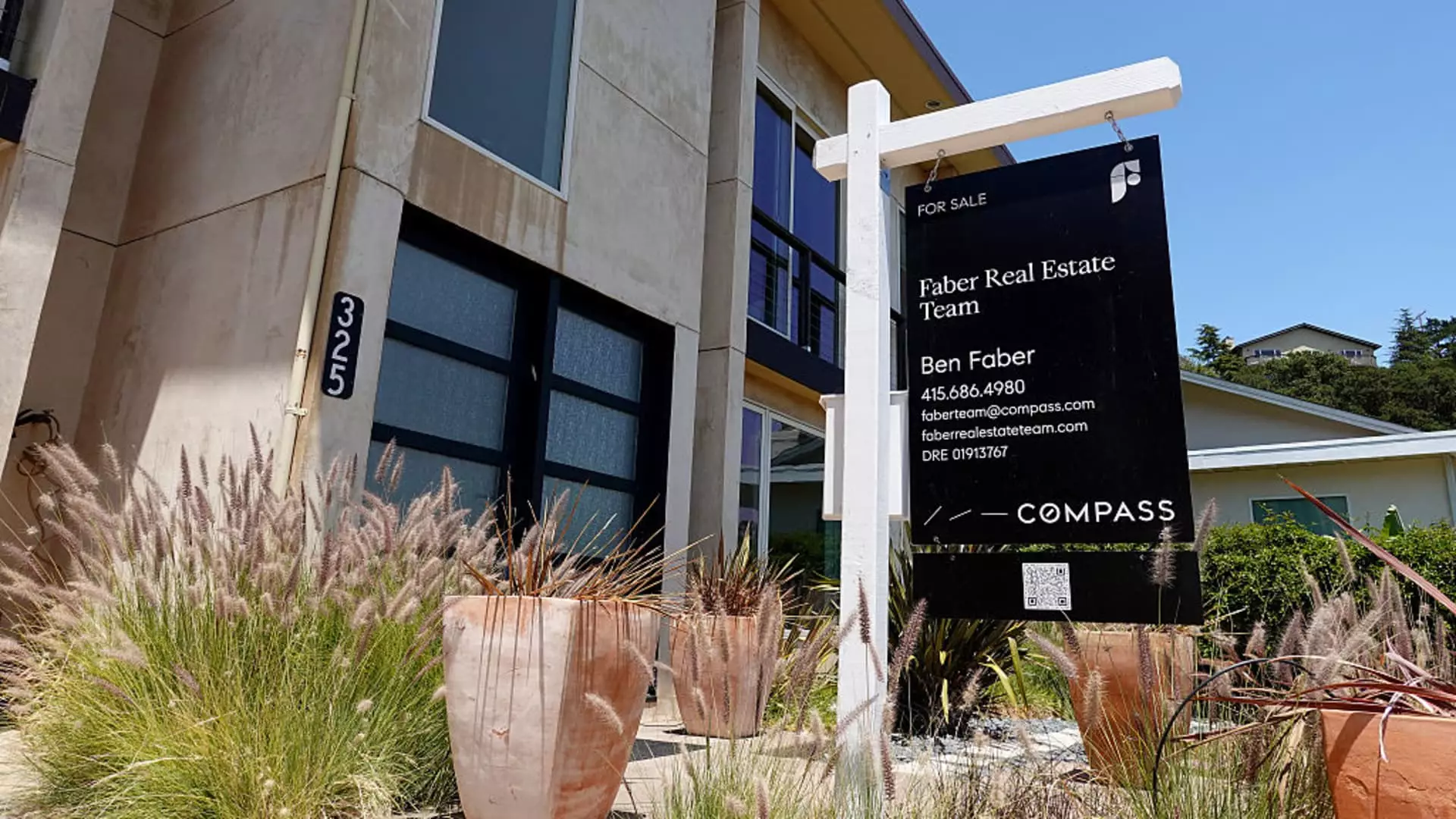As we navigate the ever-evolving landscape of the housing market, signs of a significant shift are becoming more profound and unavoidable. A recent report from the S&P CoreLogic Case-Shiller Index reveals the national home prices saw an annual increase of just 2.7% in April, plummeting from a 3.4% rise in March. This easing signals a pivotal moment for market dynamics and suggests that the time might finally have come for widespread corrective measures. The cooling of prices previously stratospheric due to pandemic fervor is not merely welcome; it’s almost an imperative for restoring balance in a sector often driven by unchecked speculation.
Crucially, this incremental rise reflects patterns that lean heavily on the recent booming spring market rather than consistent annual growth. The illusion of prosperity painted by previous months might now be fading, marking the end of an era characterized by unsustainable enthusiasm. In an environment where demands have generally been surging, the creeping slowdown in home prices serves as a necessary correction, which advocates of market stability should welcome with cautious optimism.
The Geographic Shift: A Reordering of Markets
The current housing market data bring into sharp focus the important regional shifts that characterize this evolving narrative. In a striking twist, the Midwest and Northeast are staging comebacks with price increases as high as 7.9% in New York and 6% in Chicago, while once-cherished Sun Belt regions like Tampa and Dallas experience a stark downtick. How ironic it is that the once-coveted coastal locales, which thrived during the pandemic era, are now diminishing as marquee players in the real estate game.
Regional markets, previously dubbed the best candidates for immense price appreciation, are now lagging, while traditionally stable cities have broken into this new hierarchy. As Nicholas Godec of S&P Dow Jones Indices astutely observed, this transition signifies a market maturation driven increasingly by concrete economic fundamentals rather than speculative gains. This redirection offers hope to those who favor market health over mere short-term profits, as it advocates for a more sustainable approach to housing investment.
First-Time Buyers Excluded: The Market’s Faux Pas
However, amid these shifts lies a deeply troubling concern: the exclusion of first-time homebuyers. A staggering decline in their market share to just 30% of May sales starkly contrasts with the historical benchmark of 40%. The rise in mortgage rates—hovering just above 7%—has pushed potential buyers into the sidelines, significantly shrinking an essential demographic crucial for a healthy housing market. How can we justify this exclusionary practice of wealth concentration in an already stratified society?
Higher monthly payments now stand as a formidable barrier for many eager buyers. If housing is to serve its primary purpose of providing shelter and stability, the market must extend its hand back to those who wish to enter, not push them away in hopes of breeding elitism in homeownership. The societal implications of this ongoing phenomenon could create lasting vestiges of urban inequality, where only the well-off can afford a home in their desired locations.
Supply and Demand: A Perpetually Unbalanced Equation
Despite the rising supply of homes on the market, which could suggest potential relief, the overall inventory remains uncomfortably low compared to pre-pandemic days. At the heart of this dilemma lies the reluctance of current homeowners to abandon their favorable sub-4% mortgage rates. This reluctance creates an artificial floor for prices, staving off significant corrections and signaling misplaced consumer confidence in a faltering economy.
Yet, beneath this veneer of stability, an unsettling tension persists; the housing supply to demand ratio remains skewed, threatening the market’s long-term sustainability. The sharp jumps in listings might offer hope, but they cannot mask the underlying malaise that many cite as the root cause of the current crisis—the dissonance between speculative ambition and pragmatic reality.
In summation, the housing market today encapsulates the paradox of growth versus stability. As we cautiously tread through this changing matrix of numbers and neighborhoods, it is essential for stakeholders and policymakers alike to learn from the past and steer the industry toward a more equitable and balanced future—one that fosters access and opportunity for all.

